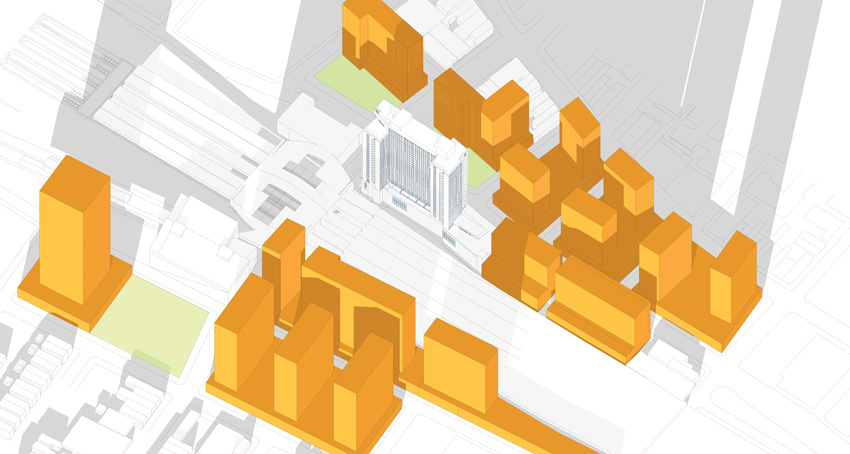Actively Pursuing Passivhaus Enclosures
Learning Objectives:
- Describe how Passivhaus designs deliver superior energy efficiencies, better indoor air quality, outstanding acoustics, and enhanced occupant health and comfort.
- Explain how carefully designed and fabricated curtain wall systems within an airtight building envelope can help building teams achieve rigorous Passivhaus standards.
- Evaluate the performance benefits and superior thermal and visual comfort levels that Passivhaus-certified curtain wall systems and windows provide.
- Recognize the cultural, market, and building practice differences between the United States and Europe, and the challenges posed by local adoption of the European-based Passivhaus system.
Credits:
As the pursuit of sustainable, energy-efficient buildings continues to intensify, a more rigorous building design certification is starting to gain traction here in North America.
Originally developed in Germany in 1990 and well-established in Europe, the Passivhaus standard produces extremely low-energy buildings with high-performance, airtight building enclosures.
“One of the most effective and proven tools we have to drive down carbon emissions and reach a post-carbon world is Passive House,” say Bronwyn Barry and Ken Levenson, co-presidents of the North American Passive House Network (NAPHN) in Passive House Accelerates, an in-depth review of the standard’s development for residential and commercial buildings—called Passive House in lieu of Passivhaus—in North America.

Image courtesy of FXFOWLE
Ultra energy-efficient, European-originated Passivhaus building designs are viable in North America, concludes FXFOWLE in a New York State Energy Research and Development Authority-sponsored study of a large, mixed-use New York City multifamily housing development with a curtain wall system. The base-case building used for the study is pursuing LEED Silver.
“A Passivhaus building meets the world’s most stringent operating energy-efficiency standard and generally will produce the least climate-changing emissions,” echoes Christina Snyder, Passive House Institute U.S.-accredited building certifier and principal of Equilibrium Energy Spaces, Manchester, Michigan.
Although the market conditions, climate, and culture are riper for Passivhaus buildings overseas, interest in the standard is growing as more North American Passivhaus projects are establishing the fact that the strict standards can be realized stateside.
In a new study sponsored by the New York State Energy Research and Development Authority (NYSERDA), FXFOWLE Architects Principal Ilana Judah, International Associate AIA, OAQ, LEED AP, CPHD, and Senior Associate Daniel Piselli, AIA, LEED AP, CPHD, analyzed a large, mixed-use New York City multifamily housing development currently under construction. The report concludes that high-rise residential buildings in New York can be designed to Passivhaus’ high levels of energy efficiency and resilience. Information taken from this report was current as of press time, but may be adjusted in future versions of the report.
The report, “Feasibility Study to Implement the Passivhaus Standard on Tall Residential Buildings,” also finds that Passivhaus can be achieved with limited aesthetic adjustments and reasonable glazing ratios in a financially viable manner.

Image courtesy of FXFOWLE
Within the context of the densly packed New York City, FXLOWLE’s NYSERDA report suggests that aggressive, energy-efficent Passivhaus designs are feasible.
As noted by Judah and Piselli, the German term Passivhaus is often referred to in English as “Passive House.” This course, and the report, use the German term because the English word “house” can cause misperception that the standard is only for single-family houses. Passivhaus can be translated from German to a more applicable English phrase “passive building.”
The Passivhaus Blueprint
To meet the Passivhaus standard, building designs must achieve high performance in the following areas: thermal insulation, thermal bridge-free design, airtightness, and windows and mechanical ventilation with heat recovery.
Ultra-low energy consumption requirements include 4.75 kBtu/{ft2yr} in heating demand, 5.39 kBtu/{ft2yr} for cooling demand, and a total building primary energy demand of 38.0 kBtu/{ft2yr}. For airtightness blower testing must produce 0.6 ACH@50Pa.
Granted, achieving these rigorous performance levels is requiring greater effort from architects, engineers, and contractors, but the benefits are worthwhile.
As laid out by Deborah Moelis, AIA, senior associate for Handel Architects, Passivhaus buildings yield building energy savings of 60 to 70 percent in heating and cooling, produce an acoustically superior, comfortable indoor environment, and deliver better indoor air quality free of condensation and mold.
“Passivhaus is a whole systems-integrated approach to designing the best, most efficient building envelopes possible,” Snyder says.
Beyond good design, Passivhaus advocates assert that the system delivers the triple bottom line benefits of lower operating costs, a more durable building, and enhanced occupant health, comfort, and performance.
In fact, the Geneva-based Intergovernmental Panel on Climate Change identified Passivhaus as one of the only whole-building strategies capable of reducing building energy use enough to achieve greenhouse gas mitigation targets for the building sector.
Buildings pursuing Passivhaus will have an easy time meeting the less-stringent energy-code requirements currently in place. Very similar to Passivhaus, the 2012 International Energy Conservation Code now requires air duct tightness, mandatory blower testing, additional wall insulation, increased fenestration U-factor thermal performance and decreased heat gain, and energy-efficient lighting and equipment.
“It is as if the building industry that has long focused on improving energy efficiency in buildings by upgrading the efficiency of the mechanical equipment has had a collective awakening. It’s the envelope!” writes architect Laura Nettleton, founder of Pittsburgh-based Thoughtful Balance Architecture, in her blog “Passive House Is Coming—Ready or Not.”
Starting to jump on board, close to a dozen states—including Pennsylvania, New York, Rhode Island, Massachusetts, Connecticut, New Jersey, New Hampshire, Idaho, Ohio, Illinois, and South Dakota—are now including Passive House certification as earning potential points in their state’s Low Income Housing Tax Credit and qualifying for 9 percent in tax credits.
“A building meeting the Passive House Standard aligns well with the Architecture 2030 goals, California’s impending net-zero energy requirements, New York City’s building operating energy goals, and Vancouver, British Columbia’s incentives,” Snyder adds.
New York City, in its Local law 31, is targeting City buildings to achieve a 50 percent reduction in energy use intensity or meet Passivhaus energy use intensity targets. “This is a very ambitious target,” reports Judah of FXFOWLE. “City agencies have also been championing Passivhaus with City-funded Requests for Proposals and the New York City Housing Authority including Passivhaus language in recent RFPs. The City also has an overall goal of meeting an 80 percent reduction in greenhouse gas emissions by 2050.”
Along these lines, New York City’s Zone Green zoning incentive directs that a portion of a building’s exterior wall—up to 8 inches—can be excluded from floor area calculations if the wall’s thermal performance exceeds code requirements. The goal is achieving high-performance enclosures and energy efficiency by encouraging developers to provide more highly insulated exterior walls.
In addition, New York City is now mandating blower door tests in buildings between 25,000 and 50,000 square feet, and the option of a blower door test or providing an air leakage plan for buildings larger than 50,000 square feet.











